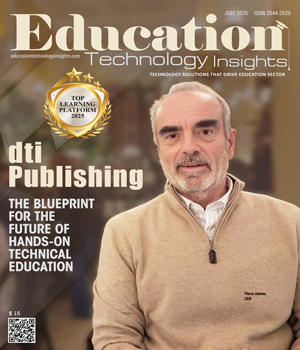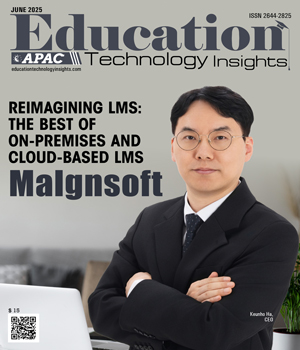THANK YOU FOR SUBSCRIBING
Be first to read the latest tech news, Industry Leader's Insights, and CIO interviews of medium and large enterprises exclusively from Education Technology Insights
Machine Learning: A multifaceted solution for higher education
Dr. Karen Ferguson, Vice President of Academic Affairs, Education Affiliates
Few would argue that the US system of higher education doesn’t need to change. Admittedly, changing a system grounded in historical traditions, structure, governance, policy, accreditation, and complex funding models is difficult. Thus, many college and university leaders have relied on edtech to drive innovation and transformation on their campuses.
Some of the major tech solutions that have been implemented at many universities include mobile learning, digital content platforms, AI and adaptive learning, virtual and augmented reality, microlearning, predictive analysis, digital OER, and gamification. Most of these innovations have been designed to improve the student learning experience. As an educator, I’ve used many of these tools and have experienced the positive impact they can have on student learning.
Unfortunately, while higher education and the edtech industry were largely focused on the student experience, the number of students has drastically declined. A demographic shift has resulted in fewer college aged students and even less of them are choosing college. Whether it’s cost, a poor perception of the value of education, trust, or access to non collegiate learning many are opting to go straight into the workforce. The current social narrative might suggest that going straight to work is the best option. Short-term it might be. However, long term it’s the combination of a college degree with experience that serves as the most powerful differentiator for students, employers, communities, and economies.
Very few of the tech solutions that have been introduced into the market impact the entire system and the greater good. So, what do we do? Is there a way to positively impact college enrollment and student completion while recognizing what these potential students have learned during their time at work? The solution is an interesting combination of (1) a process established in the early 20th century to award credit for knowledge gained through work experience and military training and (2) machine learning.
Education Assessment System® (EAS) is higher education’s answer to moving more students into the enrollment pipeline by providing a faster, less expensive, and bias-aware approach to awarding Credit for Prior Learning (CPL). EAS’s technology provides universities with the ability to attract the 110 million Americans in our workforce without a degree, provide those potential students with credit for what they have already learned, and increase university retention and graduation rates.
"Some of the major tech solutions that have been implemented at many universities include mobile learning, digital content platforms, AI and adaptive learning, virtual and augmented reality, microlearning, predictive analysis, digital OER, and gamification"
With the integration of an easy-to-use interface for portfolio creation and natural language machine learning models, EAS can quickly match an applicant’s experience to potential college courses and significantly reduce the institutional and faculty workload. The cloud-based system can also match employer and military training to university courses with a simple course-to-course match thus alleviating the lengthy process of non-traditional course reviews and increasing the likelihood of employer and university partnerships.
EAS is committed to developing solutions with a direct impact on at least two of the three major stakeholders of education: (1) students, (2) universities, and (3) the economy. In the case of using machine learning to efficiently and effectively scale how universities award credit for prior learning, we can impact all three. Students receive more credit for previously unrecognized life and work experience, helping them earn a degree faster, institutions reduce time and costs to evaluate prior learning and increase student enrollment, and more students graduate bringing critical skills and credentials to the job market.
Our system of higher education has a chance to succeed and even thrive. We have the talent and intellect to rethink how we can provide meaningful pathways at a reasonable cost while demonstrating the value of education. Technology will likely drive many of the changes needed to improve the student learning experiences and operational efficiencies needed to demonstrate return on investment. As we look to technology, we should look for win-win-win solutions that support students, the university, and the economy.
Read Also
Our AI Crisis isn't Technical. It's Human.
4 Keys to Managing Change
Active Engagement is the Foundation of Effective Leadership
Empowering Leadership through Innovation in Higher Education
Redefining Readiness: A Path Toward a Technology-Agnostic Future
The New Era of Education

I agree We use cookies on this website to enhance your user experience. By clicking any link on this page you are giving your consent for us to set cookies. More info



















